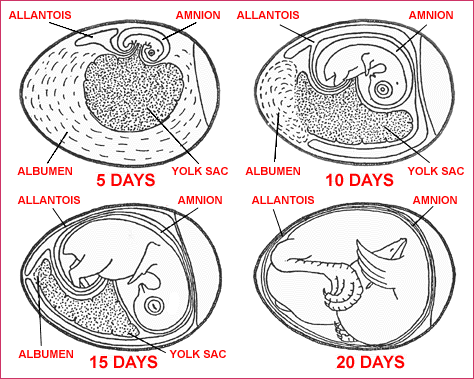Incubation
We can define the incubation as the set of physical factors present in the environment surrounding the egg. The factors that make it up are: temperature, humidity, ventilation and turning the eggs. Of these, temperature is the most important factor, since small variations in its values can be fatal to many embryos.
The changes in the egg during incubation can be described with physical laws. These changes occur, normally, only under certain levels of temperature, humidity, air, chemical content of the air and the egg positions. On the other hand, the same incubated egg modifies the surrounding environment by emitting heat, gases and water vapor.
When the egg is laid, some embryonic development has occurred and usually stops until proper cell environmental conditions (e.g. T= ca37.7°C, H=55-60%, ..) are established for incubation to resume. Soon after incubation begins, a pointed thickened layer of cells becomes visible. This pointed area is the primitive streak, and is the longitudinal axis of the embryo. The yolk contains the food that will nourish the embryo as it grows. At first the embryo is spreading through the yolk, and then through the egg white to encompass the entire interior of egg. Once the chick is formed, using the diamond (tiny bump on the end horny upper jaw) breaks the shell. A few days after hatching, the diamond disappears.
